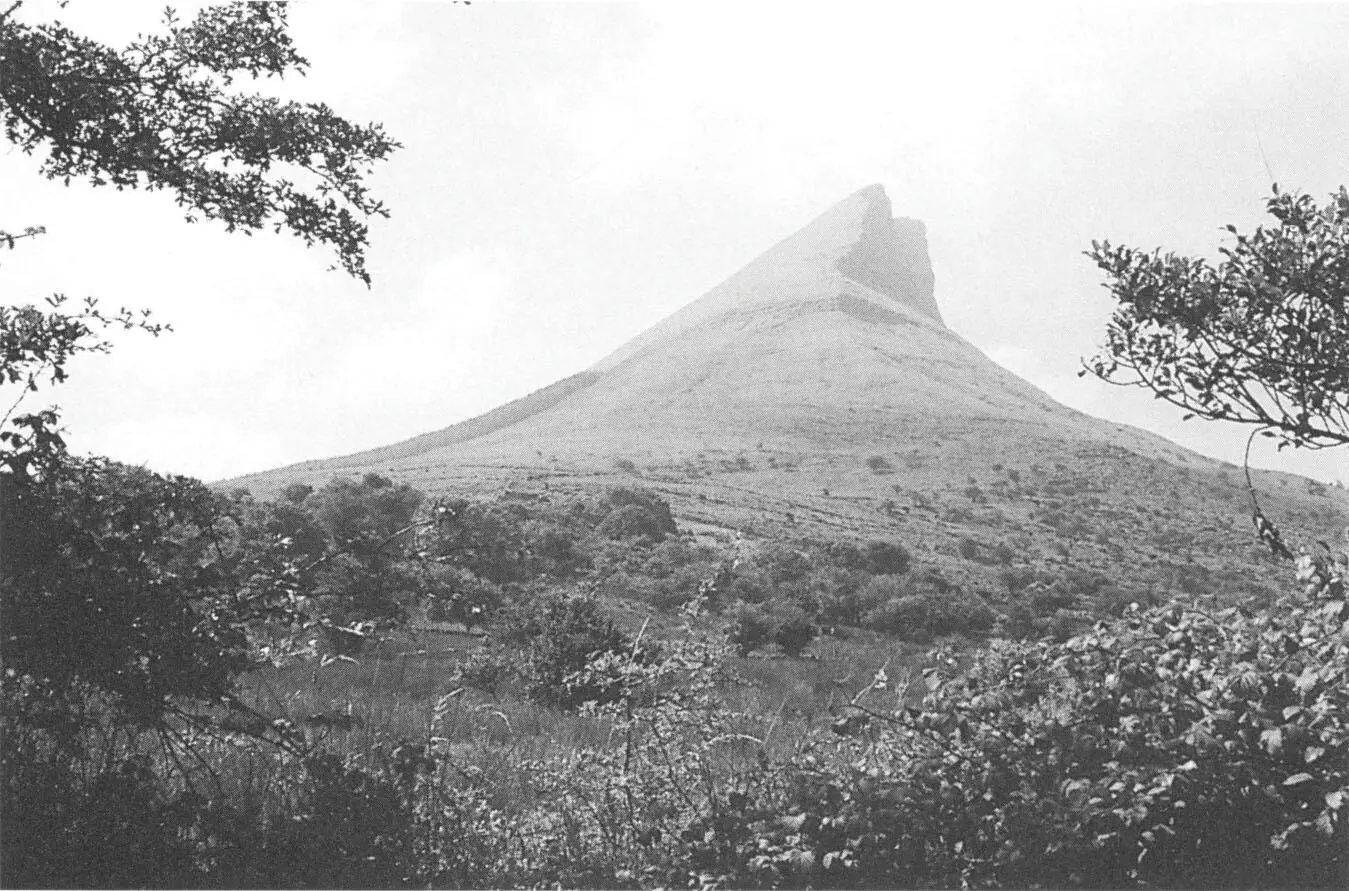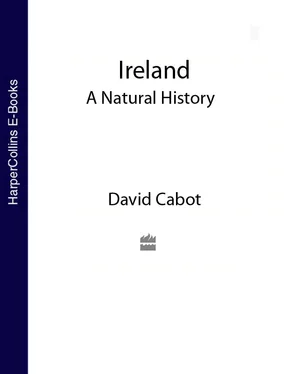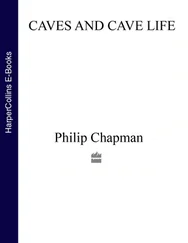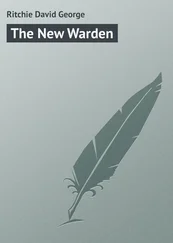Caha Mountains, Counties Cork and Kerry
The Caha Mountains, made up of a great ridge of Old Red Sandstone, lie some 40 km southwest of Macgillycuddy’s Reeks. The northern side presides over the majestic Kenmare Bay while to the south they slope down to Ban try Bay. The Cork–Kerry border runs through the high ridge, Hungry Hill being the highest point at 685 m. The interest of Caha rests with a most exciting discovery, made in July 1964, of the small and delicate recurved sandwort found growing in narrow cracks of bare outcrops of Old Red Sandstone slabs east of Knockowen (658 m) and to the north-northeast of Cushnaficulla summit (594 m). 24About 1,000 plants were found at each of the locations. The Caha Mountains are the only known station in Ireland for this sandwort and it has never been recorded in Britain. The plant is a short and small tufted perennial with prostrate to semi-erect woody stems, forming a compact cushion of leaves. It is distinguished from the somewhat similar spring sandwort, also found on mountains (locally in Clare, Antrim, Derry and on the Aran Islands, Co. Galway) by having mostly down-curved leaves and 5–7 veins on the white sepals. Its white flowers, which seem large in relation to the overall plant size, bloom from June to August.
How is it that recurved sandwort only occurs on the Caha Mountains and nowhere else in Ireland or Britain? The nearest recorded station is in the Serra de Gerez in Portugal from where it extends through the Pyrenees and Alps and further eastwards, in suitable siliceous mountain ranges, to the Romanian Carpathians. 7Geological evidence – no signs of glacial smoothing on the stone slabs: their present surface corresponds exactly to the bedding plane of the sandstone and knowledge of known movements of the ice sheets in the area – shows that the summits of both Knockowen and Cushnaficulla were spared the rigours of the ice sheets and overlooked the glaciers moving around below. Clearly the peaks were ice fee and could have acted as refugia for the sandwort during the last and earlier glaciations. 25,26Webb was of the opinion that the recurved sandwort was present in Ireland long before the last glaciation. 7
While the recurved sandwort does not fall into the category as one of the 16 arctic-alpine species in Ireland, it is the only true ‘alpine’ species in the country according to the criteria of Webb as laid out earlier in this chapter. The presence of this sandwort on the Caha Mountains strengthens the argument that many species of the Irish flora are not recent immigrants but members of a more ancient flora that was able to survive in glacier-free areas during the Ice Age.
Benbulbin mountain range , Co. Sligo
These mountains are part of a Carboniferous limestone plateau that has survived the gradual down-wearing of the surrounding landscape over millions of years. The whole area, reaching 450–600 m in height, extends over about 500 km 2between Lough Gill in Co. Sligo and Lough Melvin in Co. Leitrim. There is no evidence from glacial deposits or markings by moving ice sheets to suggest that the mountains were covered by ice during the main phase of the Midlandian cold stage to the end of the Drumlin phase of the Midlandian cold stage (79,000–13,000 years ago), so they would have been available as refugia for flora and fauna when the ice sheets tore up and scoured the lower ground, destroying all forms of life.
Evidence that some of the existing Benbulbin mountain flora thrived at lower levels many thousands of years ago comes from plant materials identified from interstadial deposits of mud and moss peat uncovered beneath a drumlin at Derryvree, Co. Fermanagh, and from silt, exposed below glacial till by a river slicing through a drumlin at Hollymount, near Lisnaskea, Co. Fermanagh. They date from before 30,000 and 40,000 years ago respectively. Analysis of the plant materials indicate that the vegetation of the time was characteristic of a cold climate in a tundra landscape. The species identified included the following arctic-alpine and alpine plants: dwarf willow, mountain sorrel, fringed sandwort, purple saxifrage and mountain avens. 27Today the cliffs and screes of Benbulbin and surrounding mountains are one of the most important habitats for these species in Ireland, and include the only known site for the fringed sandwort. It is highly likely that in the face of approaching ice sheets these and other species moved up the mountain to take refuge from the advancing ice glaciers. Whether they survived the long period of polar desert conditions, with intense cold, is less certain.
Benbulbin, Co. Sligo. An uplifted carboniferous limestone plateau with dramatic cliffs, the home of many rare arctic-alpine plants.

Benwiskin (514 m), Co. Sligo, as dramatic as the nearby cliffs of Benbulbin (F. Guinness).
The best known part of the Benbulbin mountain range is the spectacular western spur where the eponymous summit rises to 526 m with its high, sculptured profile. Two large, cliff-walled valleys, each with a lake – Glencar Lough in the south and Glenade Lough in the east – bisect the two mountain lobes and provide topographical diversity to an already very dramatic landscape. The Benbulbin area, extending from Co. Sligo to Co. Leitrim, is so extensive that it would take a botanist at least seven days, working at a feverish pitch, to do the place justice. There are, however, two ‘hot spots’ for the arctic-alpines and alpines.
The first area is the cliffs of Annacoona in the Gleniff Valley, guarded at the northwest entrance by Benwiskin (514 m) which rises to a remarkable pinnacle, like the Matterhorn, surveying the landscape. The Annacoona cliffs face northeast, overlooking the great cirque of Gleniff, gouged out by a glacier. On a still summer’s day the croaking of ravens, rolling around and playing aerobatics along the steep cliffs, the occasional shrieking of a peregrine and the bleating of sheep are the only sounds in this otherwise silent valley. On the cliffs at Annacoona the arctic-alpine flora starts from an altitude of about 244 m upwards. The rarest species is fringed sandwort which has its home here on the upper sections of the limestone cliffs, between 300 and 550 m. This small and deceptively dainty, white-flowered and slightly hairy perennial is a member of the Caryophyllaceae or chickweed family and was first discovered by the eminent Welsh antiquarian and natural historian Edward Lhwyd on one of his visits to Ireland in 1699. He recounted the discovery in a letter to Tancred Robinson, a great friend of the British botanist John Ray: ‘In the same neighbourhood on the mountains of Ben Bulben and Ben Buishgen, we met with a number of the rare mountain plants of England and Wales, and three or four not yet discover’d in Britain.’ 28Irish specimens of fringed sandwort were assigned to the special endemic subspecies Arenaria ciliata subsp. hibernica by Ostenfeld & Dahl in 1917 who also separated off two other subspecies, A. c. pseudofrigida found in arctic Europe and Arctic sandwort A. c. norvegica found in Shetland, arctic Europe and America. 29There is one record of A. c. norvegica from the Burren in Co. Clare but it has never been rediscovered despite repeated attempts by many botanists. Endemic species, or subspecies, are restricted to a specific geographic region and have evolved the differences that separate them from their close relations due to their isolation, or in response to soil or climatic conditions.
Annacoona is the only known Irish station for alpine saxifrage, first discovered here by the botanist John Wynne in 1837. Its leaves are purple underneath and it has a very hairy inflorescence with white petals and reddish sepals. Within the Benbulbin area alpine meadow-rue is also confined to Annacoona. Amongst the species listed by Praeger found on the cliffs and escarpments, the following occur in profusion: 3alpine scurvygrass, hoary whitlowgrass, mountain avens, yellow saxifrage, mossy saxifrage, brittle bladder-fern, green spleenwort, limestone bedstraw and common milkwort. More locally abundant are lesser meadow-rue, moss campion, purple saxifrage, upland enchanter’s-nightshade, mountain sorrel, tea-leaved willow, blue moor-grass, holly fern, beech fern and Irish eyebright. Raven in Mountain Flowers writes that the Benbulbin eyebrights he saw on his visit resembled some, but not all, of the specimens of Euphrasia lapponica he had seen in isolated populations in northern Scandinavia 1. The following species are rare: Welsh poppy, wood vetch, several hawkweeds including Hieracium hypochoeroides, cowberry, alpine bistort, dwarf willow, juniper, stiff sedge, maidenhair fern, large thyme and alpine meadow-grass (found only here and on the Brandon Mountain, Co. Kerry). Isolated trees or small clumps of them, firmly rooted in the vertical cliffs, are a curious sight – rock whitebeam, wych elm and yew are all present, only ever to be touched by birds and flying insects.
Читать дальше













